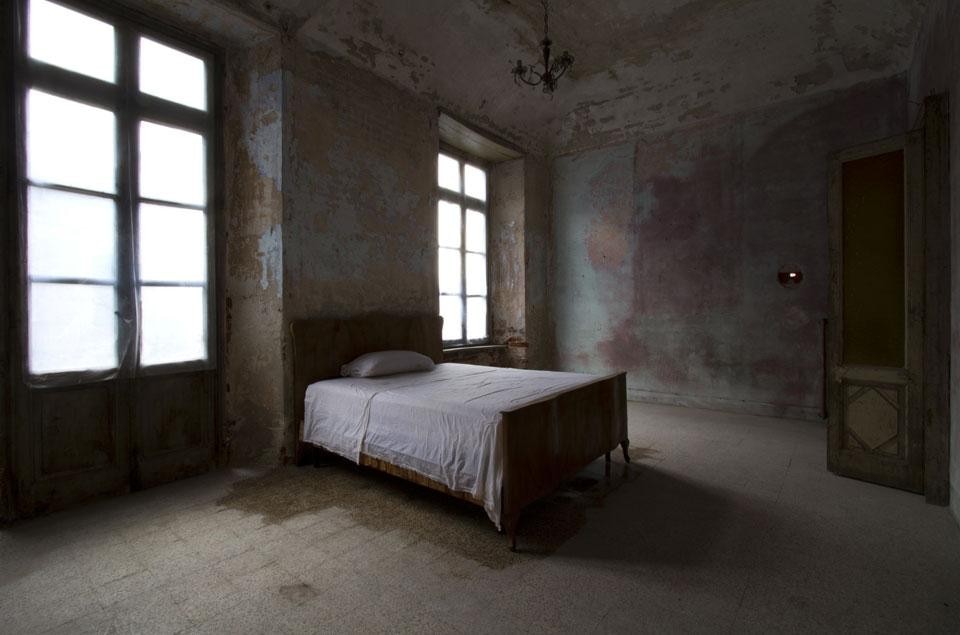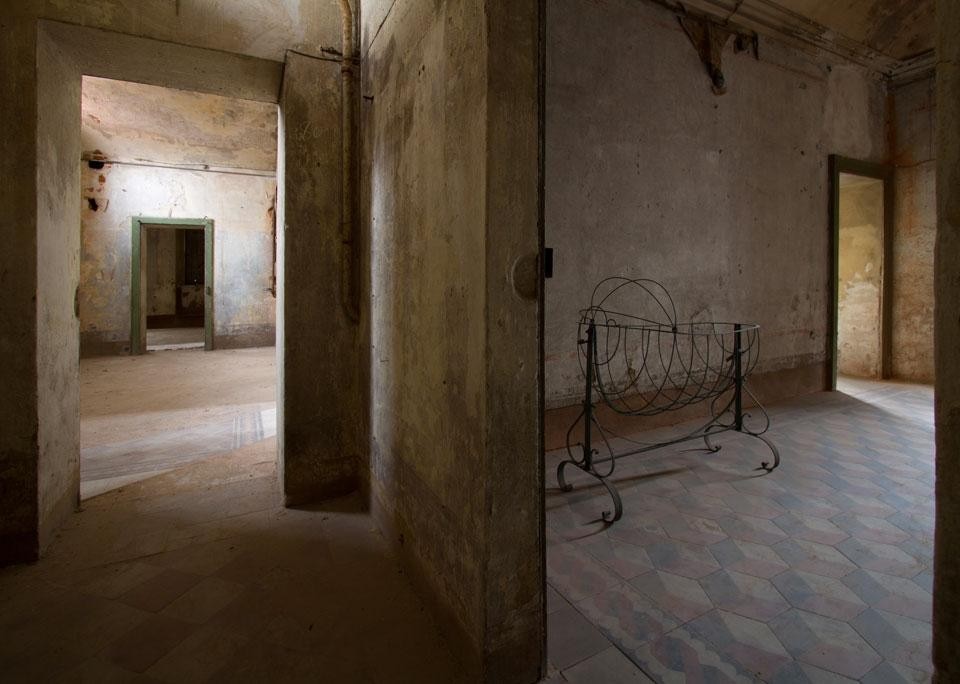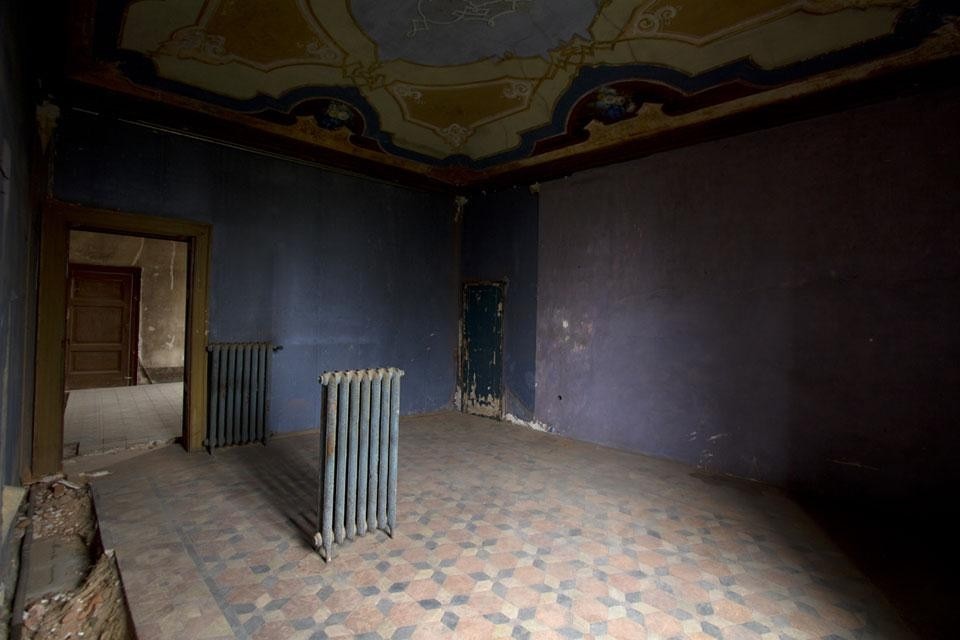Inside, it spreads over 5,000 square metres, through seven floors accessed via staircases big and small — four in total: one grand staircase, one for servants, one for tenants, and one for service — situated in blocks set around two central courtyards. The apartments differ greatly, from the more austere to the sumptuous, sometimes elegantly frescoed and complete with fireplaces, patios and terraces. All enjoy sweeping views of the valley and the nearby dome of San Gaudenzio.
Abandoned for more than thirty years — its decaying rooms with flaking plaster and crumbling walls open onto the corridors, stripped of all but the rarest metal object and left to rot like a carcass —, Casa Bossi is today the setting of an artistic intervention by Gian Maria Tosatti. The intervention was commissioned by the Comitato d'Amore per Casa Bossi [Committee of Love for Casa Bossi], which works to further for the building's refurbishment and use as a cultural centre, and curated by Alessandro Facente and Julia Draganovic.
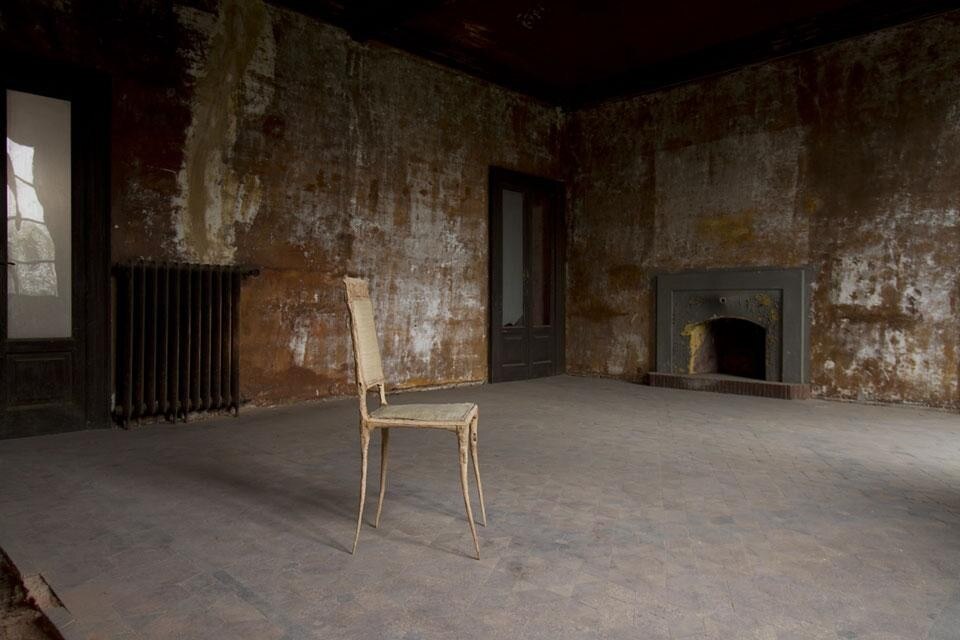
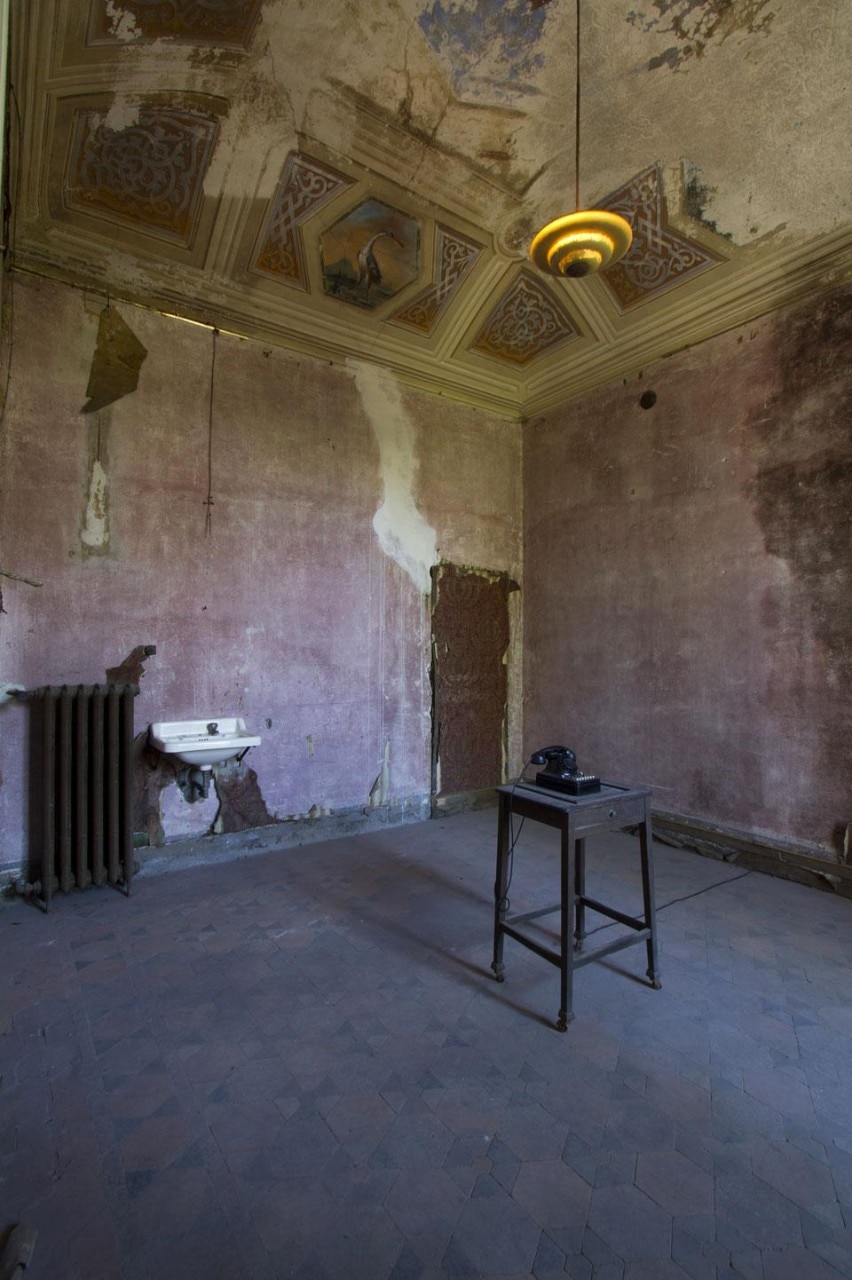
Tosatti's actions do not regenerate their surroundings nor do they reveal anything specific. Rather, they add meaning, depth and intensity to them
